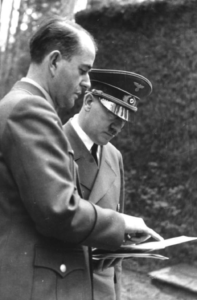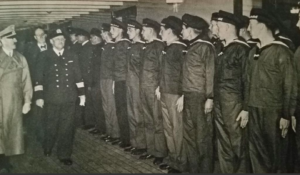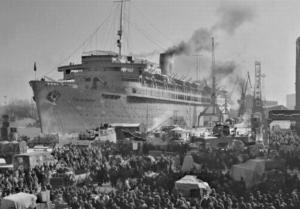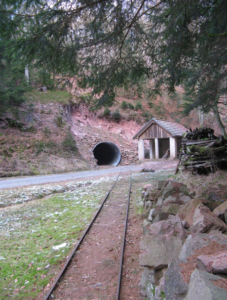Divers from the Baltictech Diving Group in Poland have recently found a shipwreck they believe may still contain the legendary treasures of the Amber Room.
The sunken remains of what is thought to be the ‘Wilhelm Gustloff’, a German military cruiser that went down in April 1945, were located by divers in the Baltic Sea at a depth of some 88 metres north of the Polish port city of Ustka.
In its holds, they discovered military vehicles, porcelain and numerous crates with as yet unknown contents.
Valued today in excess of $500 million, this stunning treasure disappeared in the dying days of WWII on the Eastern Front. Ever since 1945, treasure hunters and historians from many nations have searched for what has been dubbed the ‘Eighth Wonder of the World’.
A LEGENG IS BORN

The Amber Room was designed by the German baroque sculptor, Andreas Schütler and put together by Danish craftsmen, under the supervision of Gottfried Wolfram, a German master craftsman working in Denmark.Construction of the room began in 1701 and was made to be installed at Charlottenburg Palace in Berlin, then the home of King Friederick I of Prussia. It was at the request of his wife, Sophie Charlotte that the room was created.The mosaics that adorned the walls and ceiling took eight years to complete and the room was installed in 1709.Made up of several tonnes of amber set into gold-leaf panels, the intricate mosaics were topped off with many other semi-precious stones. The room of gold and amber glowed magically against the light of 565 candles.
In 1716, Russian emperor Peter the Great visited Prussia and saw the Amber Room ; he told his host Frederick I how bedazzled he had been by its beauty.The Prussian king gifted the room to Peter the Great as a token of friendship, as well as to cement a Russo-Prussian alliance against Sweden. And so, the Amber Room was shipped to Russia.Eighteen large crates arrived at the Winter Palace in Saint Petersburg to become part of Russia’s European art collection. But it wasn’t to stay there…
After she came to power following a bloodless coup in 1741, Tsarina Elizabeth asked for the Amber Room to be moved to Catherine Palace in Tsarskoye Selo, renamed Pushkin in the 20th century. It lies some 25 km south of St. Petersburg and was the summer residence of Russian emperors for over 200 years.But the Amber Room’s new home was larger than its original size. So, Francesco Rastrelli, an Italian architect who worked mainly in Russia was hired to redesign the room to fit.More amber was shipped from Berlin and after its installation, the walls of the room covered 55 square metres and held 6 tonnes of amber as well as other semi-precious stones.The Amber Room was used by the royal family as a venue for lavish receptions and to entertain noble and high-ranking guests. Tsarina Elizabeth also used it as her private meditation room. And there it remained quite happily until late 1941.
THE PLAGUE OF WAR
In June of that year, Hitler launched Operation Barbarossa which saw millions of German troops cross into the Soviet Union. The Wehrmacht’s Army Group North was rapidly approaching Saint Petersburg. Curators at the palace worked feverishly to remove the art treasures to prevent them from falling into German hands. But the amber panels proved difficult to move in a hurry; the amber had become brittle over the decades. The curators had no choice but to leave the priceless room in situ. Instead, the Soviets tried to disguise it with wallpaper.

German forces rapidly captured the Catherine Palace, largely empty of its contents and experts soon arrived to locate the amber panels. It took the Germans just two days to strip the panels from the walls and to pack it into 27 large crates, ready to be shipped west to Königsberg – today’s Kaliningrad.They believed that the room was made by Germans for Germans ; they wanted it back.On 14 October 1941 the Amber Room reached Königsberg Castle where it was stored, and one month later, a local newspaper reported that the castle would feature the Amber Room as an exhibit.The curator of Königsberg Castle Museum, Alfred Rhode was a renowned amber expert and while the panels were on display, he spent time studying them as well as their history for two years.But by january 1945, Königsberg was on the front line, under heavy Royal Air Force bombing raids and now threatened by the fast moving Red Army.Adolf Hitler ordered that cultural artefacts of priority, including the Amber Room be moved out of Königsberg.Albert Speer, Reich Minister of Armaments and his teams began packing and moving thousands of pieces of priceless art, including paintings, sculptures, precious stones, gold and silver.

It is known that between the 21st and 24th of January 1945, several caches of looted valuables were shipped west…but was the Amber Room among them ?Things became complicated when the Gauleiter Erich Koch who was in charge of the civil administration, abandoned Königsberg, leaving the army in charge, under the command of General Otto Lasch. It remains unclear as to whether the Amber Room was packed and moved out of the museum during this period.Koch fled, first to Pilau and then by evacuation ship to Flensburg, before being captured by the British in Hamburg in April 1949. We will return to Koch as he is an important character in this story.

The Red Army captured Königsberg on 9 April, 1945 but the Amber Room was nowhere to be found. So what became of the priceless panels ?In January 1945, everything looked very bleak for Germany. Other than the fact that in the west, the Allies had pushed back the German offensive in the Ardennes and in the south the Italian campaign had failed, Hitler’s real worry was the outcome of events on the Eastern Front.The Red Army had made rapid progress on their campaign towards reaching the German heartlands. They had not only entered East Prussia but had also liberated Warsaw. Their aim was to raech Berlin as rapidly as possible.
LIFE LOST, TREASURES LOOTED


It was in the face of this surge that Admiral Karl Doenitz organised the largest ever evacuation by sea : ‘Operation Hannibal’.Within 15 weeks, from January to May 1945, around 1000 ships and vessels of various types, including fishing boats and cruise ships evacuated around 2 million people, including military personnel and civilians across the Baltic Sea to Germany and German-occupied Denmark.This was more than three times the number of people evacuated in the nine day operation at Dunkirk.One of the cruise liners involved was the ‘Wilhelm Gustloff’ which had already been used as a hospital ship.Although it was designed to carry 2000 people, during the evacuation some 11,000 people were packed onto it.Many believe that the room was loaded aboard in large crates, perhaps on the orders of Gauleiter Koch himself. On 30 January 1945, the ship was torpedoed and sunk by a Soviet submarine in the Baltic, killing 9,500 passengers and crew. It was the biggest maritime disaster in history.

It appears that the Soviets kept Koch alive after the British handed him over to the Poles in the 1950s. However, salvage attempts in the 50s turned up nothing and Koch died in prison in 1986 at the age of 90, without elaborating on the issue.Another theory that has proved quite popular sumises that the Amber Room was destroyed along with Königsberg Castle. Already badly damaged by RAF bombs in August 1944, the Soviets smashed the castle with artillery during the battle to capture the city.
It has been stated by Soviet investigators that the Room was destroyed between the 9th and 11th of April 1945 in fires.However, a variation of this story suggests that a part of the Amber Room was discovered intact in the castle’s cellars but kept secret by the Soviets. It was thought that the theft and destruction of the Amber Room would be a useful Cold War propaganda tool, blaming the West for its loss.
It was strange that Königsberg Castle was placed off-limits during the Soviet occupation and in 1968, Soviet leader Leonid Brezhnev ordered its ruins levelled, preventing any proper investigation of the site.

On the same site today stands the ‘House of the Soviets’, an unfinished building that was intended to house the central administration of the Kaliningrad Oblast.Construction had started in 1970 but soon ran into technical problems. In 1985, development was definitively halted when funding ran out and the regional Party Committee lost interest in the project.But there is a third theory ! In 1997, a set of four amber stones from the famous room were discovered in Germany. They were in the possession of a soldier who had helped pack up the room for shipment. So important were they that had been returned to Russia and were used in the Amber Room’s reconstruction at the Catherine Palace.Perhaps the Germans did manage to spirit the panels out of East Prussia and they lie hidden in a salt mine or a lake somewhere in Germany.Regardless of which theory one subscribes to, the search for over half a billion dollars’ worth of treasure will probably continue until someone finally discovers the true fate of the Amber Room.
TREASURE HUNTERS ON THE TRAIL
In 1997, a group of German art detectives received a tip-off that a piece of the Amber Room was being sold. They contacted the seller’s lawyer and found out that the seller was the son of a dead soldier and had no idea of how or where his father had obtained the piece. So it is possible that the piece was stolen at some point during the dismantling and removal of the room by German soldiers.In 2017, three German treasure hunters, Peter Lohre, a geo-radar spacialist, Gunther Eckhardt, a scientist and Leonhard Blume, a homeopath believed that they had found the long lost treasure. According to them, it is concealed inside a network of tunnels, beneath a cave in eastern Germany. In fact, Nazi scientists once used the tunnels but no records of their activities have been found.

Using ground-penetrating radar, the team was able to locate and examine a subterranean complex beneath Prince’s Cave, near the town of Partenstein, not far from the border with the Czech Republic.Leonhard Blume told Britain’s Times newspaper : “We discovered a very deep and long tunnel system and we detected something that we think could be a booby trap”.“Above the hideout is a railway line, where in April 1945 a train from Königsberg was stopped ”, radar expert Peter Lohre told the UK’s Daily Express, implying that the room may have been transported on it.Indeed, marks on trees seemed to indicate that crates were moved at the site, using steel cables. As such, something does appear to be stashed in the tunnels near Hartenstein in Saxony. But no one knows what.“We want to go on but it’s all very complicated and we need a sponsor”, Blume told British newspaper, The Independent.Hopeful treasure hunters have been seeking the room for decades, including the Soviet secret services who failed to find it after ten years of searching.The conventional theory which is supported by the 2004 investigation of British journalists Adrian Levy and Catherine Scott-Clark is that the room was never moved from Königsberg Castle ; in fact, it was probably destroyed during British or Soviet attacks on the city.The same conclusion was reached independently by Soviet investigators after the war.According to a post-war report by the lead Soviet investigator Alexander Bruzov which was retrieved from the Russian national archive, the Amber Room was destroyed between 9th and 11th April 1945.These dates refer to the Battle of Königsberg which concluded with the Soviet occupation of the city.
Of course, there are other theories claiming that the Amber Room was never destroyed.For example, according to a documentary broadcast in Germany in 2003, a brigadier by the name of Albert Pomp had the room quietly dismantled at the request of his uncle, Martin Mutschmann who was the Nazi regional leader of the state of Saxony.It is, according to the documentary, hidden in an old mine in Nordhausen, in northern Thuringia.The most unlikely theory is that the room that the Germans dismantled and transported out of the Catherine Palace was in fact a fake replica ordered by Joseph Stalin.But the room seems to also have a curse associated with it. Aptly named the Amber Room curse, it claims the lives of those that become too closely connected to it. These people meet untimely deaths, starting with Alfred Rhode, the former curator of Königsberg Castle Museum and his wife. They died of typhus while the KGB was searching for the room.
General Gusev, a Russian intelligence officer was killed in a horrible car crash shortly after speaking with a journalist about the supposed whereabouts of the Amber Room, and in 1987, Georg Stein, a former soldier and Amber Room hunter was viciously murdered in a Bavarian forest while searching for the missing room. Are all these mysterious deaths just coincidences or are there other forces at work ?Ultimately, the fate of the Amber Room may never be known and it remains one of the most fascinating mysteries of lost treasure in modern times.But anyone who wishes to witness its sublime beauty, can visit a replica inaugurated in 2003, in the Catherine Palace Museum in Pushkin, Russia.It was constructed over a period of 24 years with the expertise of some 70 Russian and German amber craftsmen and scholars.
The room may not be an original but it glows like an authentic treasure.

